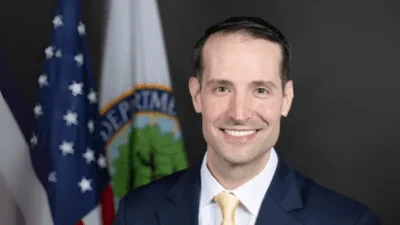The Congressional Record is a unique source of public documentation. It started in 1873, documenting nearly all the major and minor policies being discussed and debated.
“INTRODUCTION OF H.R. 520--THE DEVIL'S SLIDE TUNNEL ACT” mentioning the U.S. Dept. of Transportation was published in the Extensions of Remarks section on pages E129 on Feb. 3, 1999.
The publication is reproduced in full below:
INTRODUCTION OF H.R. 520--THE DEVIL'S SLIDE TUNNEL ACT
______
HON. TOM LANTOS
of california
in the house of representatives
Wednesday, February 3, 1999
Mr. LANTOS. Mr. Speaker, we on the Pacific Coast of our nation face the periodic wrath of nature when the El Nino storms lash our coast. We faced that last year. We faced a similar series of El Nino winter storms in 1983 which wreaked havoc with our coast. I am sure my colleagues remember the images of Pacifica, California, in my Congressional District of homes sliding down cliffs into the pounding surf below.
One of the most serious concerns along the Pacific Coast 12 miles south of San Francisco is the impact of these periodic storms upon a section of the Coast Highway, Highway 1, which is known locally as Devil's Slide. This part of the highway precariously hugs a cliff high above the pounding surf of the Pacific Ocean 600 feet below.
In 1983, the winter storms forced the closure of Highway 1 at Devil's Slide for six months after a section of the roadway slipped into the ocean. In the winter of 1998 another series of winter storms resulted in the closure of the highway for several weeks.
The closure of the highway at Devil's Slide has left residents and businesses dangerously isolated. Perennial closures of Devil's Slide have had a devastating effect on coastal communities and residents. Residents have endured unbearable commutes; access to emergency medical care and other services have been threatened; businesses have lost thousands of customers; and some businesses have failed as a result of the closure of the highway. For residents and businesses along the San Mateo County coast, it is vital to maintain the integrity of Highway 1 in this area.
Mr. Speaker, 16 years ago, in 1983, heavy winter rains left a 250-
foot-long crevice in the road which made the road impassible for 4 months. Then Chairman of the Surface Transportation Subcommittee, Glenn Anderson, held a series of field hearings in Half Moon Bay and Pacifica, CA, and committee members carefully surveyed the unstable roadway which was sliding into the sea at a rate of 3 inches a day. Committee members viewed 8-foot-deep cracks and fissures in the roadbed and determined that this vital transportation link was eligible for emergency Federal funds. At my request, the Congress provided funding for the permanent repair of Highway 1 at Devil's Slide.
The California Department of Transportation [CALTRANS] made temporary repairs to the roadway and proposed building a controversial 4.5 mile long bypass around Devil's Slide as the permanent repair. Many of the residents opposed the bypass on environmental and other grounds, and construction was delayed in the courts for over a decade. More recently, a false sense of security, brought on by 10 years of drought, ended in January 1995, when heavy rains again closed Devil's Slide for extended periods, disrupting the lives and livelihoods of tens of thousands of residents and businesses.
Mr. Speaker, after public debate and lengthy lawsuits, the voters of San Mateo County resolved the conflict in a referendum in which the voters decided overwhelmingly in favor of the construction of a mile-
long tunnel at Devil's Slide rather than the earlier proposal for a bypass which would involve extensive cutting and filling of Montara Mountain. The referendum amends the local coastal plan, substituting a tunnel as the preferred permanent repair alternative for Highway 1 at Devil's Slide, and prohibits any other alternative unless approved by the voters. Following the release of a Federal Highway Administration sponsored study which found that the tunnel is environmentally feasible and its costs would not differ significantly from the costs of a bypass, CALTRANS reversed its opposition to a tunnel at Devil's Slide.
Mr. Speaker, today I have introduced H.R. 520, the Devil's Slide Tunnel Act, to ensure that funds already appropriated and obligated for Devil's Slide will remain available to CALTRANS to build the tunnel at Devil's Slide. This legislation will provide greater flexibility to State transportation officials to use Federal funds already appropriated by Congress to fix this vital transportation link.
Joining me as cosponsors of this legislation are bipartisan members of the Bay Area congressional delegation whose constituents are most affected by the Devil's Slide highway problem--my colleagues, Tom Campbell of San Jose, Anna Eshoo of Atherton, and Nancy Pelosi of San Francisco.
Mr. Speaker, if local and state agencies and the citizens of a region determine that a better transportation alternative exists than the alternative for which funds have been obligated, as was the case for Highway 1 at Devil's Slide, then the Federal Government should provide greater funding flexibility, as long as all other Federal laws are complied with. It is important that we not permit these funds to lapse. The rebuilding of a severely damaged highway in its existing location may no longer be feasible, and in such cases funds already available to a community should continue to be available.
History tells us that Devil's Slide will wash out again--it is only a matter of time. It is my hope that swift enactment of this legislation will ensure a permanent solution to the residents of the San Mateo County Coastside. I urge my colleagues to support the ``Devil's Slide Tunnel Act.''
____________________








